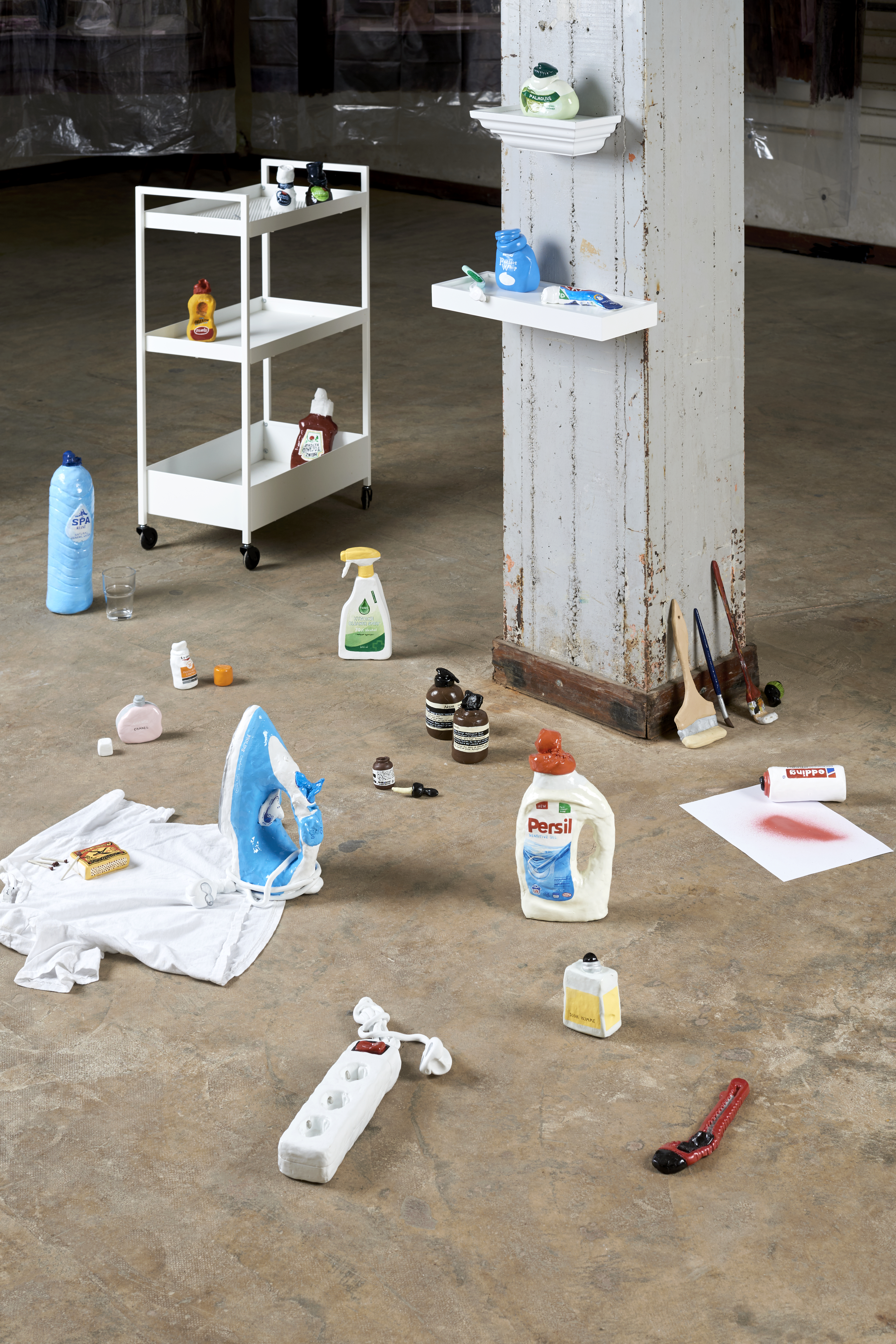
As a starting point, the designer carried out research on differences between a text and an object, in which she finds it as ‘the record of a movement alive in a time frame’. Although both language and objects are created within the passage of time, unlike language, the objects look standstill in a time frame. A sentence on the other hand clearly depicts both the movement of a subject and the mobility of time by itself through ‘verbs’ and ‘tenses’. The objects have their movements through humans and can neither involve any movements nor record time on its own. This is the reason why objects seem stationary away from time.
It perhaps is a matter of course that humans feel a sense of closeness with characters that have temporality, like different impressions we have in between stationary objects and alive animals or growing and withering plants that might seem stationary. Chanbyul wants to make the objects to be seen lively in a time frame by itself. To do so, Park grants incidents to her objects and captures their kinetic actions that are created while interacting with humans. When incidents are created in a time frame, the objects with incidents also obtain temporality.
In the work <Object Verb>, the objects remember each of the incidents that happened to their body. Park recombines the objects with clay that gets deformed by external forces. Using this nature, she records lively movements that the objects experience in daily life. By visually revealing these moments, Chanbyul transforms each object into a character of a novel and narrates with her objects by granting them incidents and characteristics.
“We are moving but also confined in a spot of existing time.” – Time by Alexander Demandt
The work <Object Verb> records and visually holds the spot of time for its evidence. The current movement that will become a past is captured in the real object and is being led to the future. This signals that the objects are present with human beings in time.
photo credit @pierrecastig
It perhaps is a matter of course that humans feel a sense of closeness with characters that have temporality, like different impressions we have in between stationary objects and alive animals or growing and withering plants that might seem stationary. Chanbyul wants to make the objects to be seen lively in a time frame by itself. To do so, Park grants incidents to her objects and captures their kinetic actions that are created while interacting with humans. When incidents are created in a time frame, the objects with incidents also obtain temporality.
In the work <Object Verb>, the objects remember each of the incidents that happened to their body. Park recombines the objects with clay that gets deformed by external forces. Using this nature, she records lively movements that the objects experience in daily life. By visually revealing these moments, Chanbyul transforms each object into a character of a novel and narrates with her objects by granting them incidents and characteristics.
“We are moving but also confined in a spot of existing time.” – Time by Alexander Demandt
The work <Object Verb> records and visually holds the spot of time for its evidence. The current movement that will become a past is captured in the real object and is being led to the future. This signals that the objects are present with human beings in time.
photo credit @pierrecastig